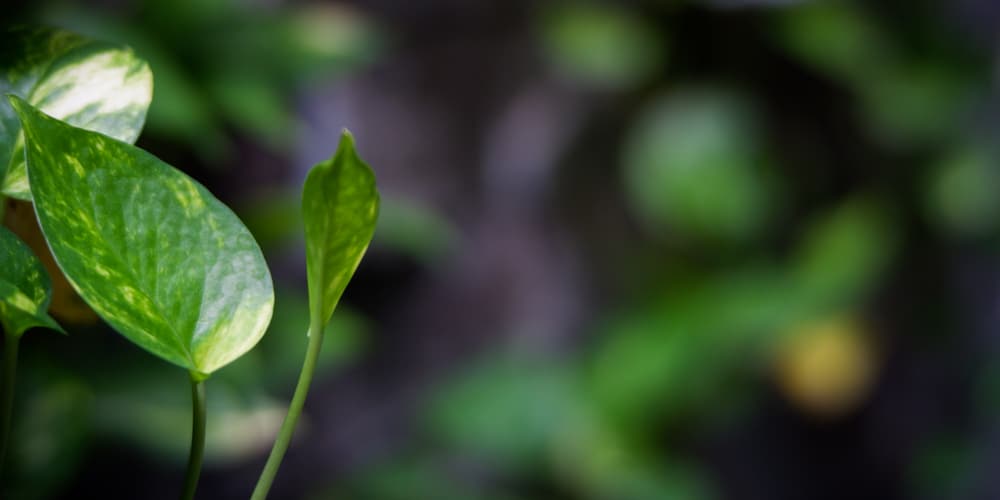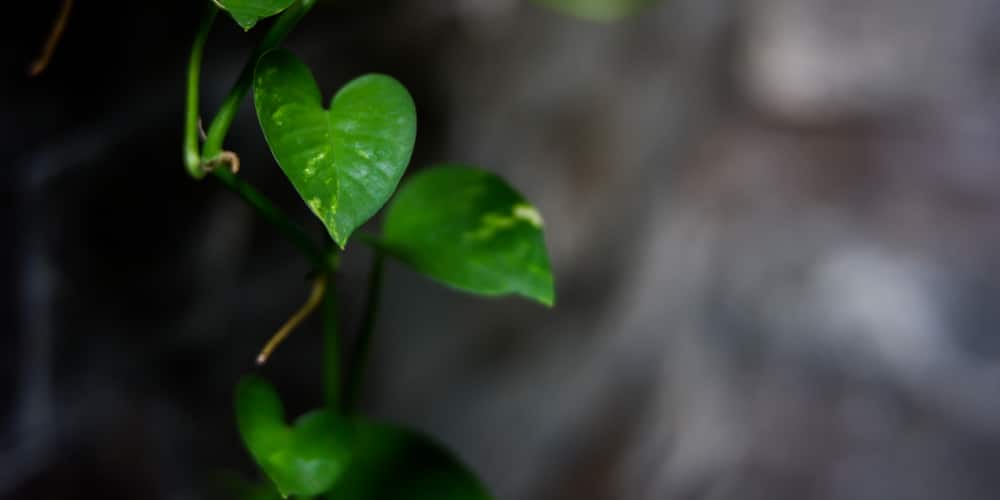Global green pothos is relatively easy to grow indoors in homes and commercial spaces. This popular houseplant grows equally well in hanging baskets or planted in containers on a table, desk, or floor.
The global green pothos growth rate is moderate to fast, and the plant typically reaches between 2 to 3 feet tall at maturity when grown in a pot or container. These plants can get taller if grown outdoors in a warm climate. Let’s look at how to grow and care for a Global Green Pothos.
What is a Global Green Pothos?
Global Green pothos is part of the Araceae family and is native to Asia. These plants are very rare and fetch high prices. The Global green pothos has mottled leaves that are dark and light green. They can grow up to 10 feet tall if planted outside and allowed to climb. The plants will also spread to a width of about three feet. If grown as houseplants, they will remain smaller. If you live in zones 10 to 12, you’ll likely have success growing a global green pothos outdoors.
Global Green Pothos Care Guide
Global Green pothos is native to tropical Southeast Asia but can now be found in parts of Africa, Australia, India, southern China, the Pacific Islands, Florida, and Hawaii. Because it’s easy to grow, global green pothos is also cultivated as a houseplant in many homes and offices worldwide. Here are some tips to help you grow a healthy, thriving global green pothos that will last for years to come.
Temperature
Global Green pothos plants grow well in normal room temperatures between 60 and 80 degrees Fahrenheit. Temperatures above 80 degrees can stress or burn your pothos, which can cause leaf loss and decline. These plants aren’t very cold hardy and shouldn’t be left outdoors in the winter if frost is expected or if temperatures are likely to fall below 55F.
Sunlight Needs
Indirect light from an east window is ideal for global green pothos houseplants. These plants will tolerate lower lighting conditions, but growth rates may be slowed down dramatically. Green Pothos do not like bright, direct sun rays as it causes their leaves to burn and turn yellow.
Humidity
The plant needs a humid environment, so placing it on a pebble tray or misting the leaves once a week adds moisture to the air around the foliage. Pothos grow best when the relative humidity levels stay around 50% to 70%. You can also group tropical plants, place your plant in the bathroom or kitchen or invest in a humidifier.
Fertilization
Green pothos doesn’t require much fertilizer, so feeding the plant only every other month is usually enough to help it thrive. If you want to fertilize your green pothos, use a water-soluble houseplant fertilizer and follow the directions on the packaging. Alternatively, you can use fertilization granules at the beginning of the season that will slowly add nutrients to the soil as they dissolve.
Pruning
To reduce leaf size and maintain a compact shape, pinch off individual leaves right above a set of leaves using your fingers or cut them with scissors to make neat cuts. You can also remove any dry, damaged, or old leaves. It’s best to use a knife or pair of scissors that have been sterilized when trimming plants, as this will stop the spread of bacteria. and can make your pothos look fuller and bushier.
Repotting
Global green pothos may stop growing when it becomes root-bound. You can report your plant every one to two years into a new potting soil mixture to promote new root growth and maximize the plant’s health.
Soil
Pothos grow best when the potting mix is composed of equal parts peat moss, perlite, and vermiculite. The plants won’t do well in clay pots because they allow excess water to evaporate and ensure that the roots aren’t receiving too much water. Pothos like soils that are neutral or slightly acidic, a pH range of between 6.1 and 6.5 is ideal for these plants. Use soil that’s loose and well-draining to prevent root rot.
Watering
Global Green pothos plants should only be watered when all of the soil surface feels dry 1-inch below the top layer. Overhead watering may cause brown spots on leaves, so water them at the base instead with tepid water until it runs out of the bottom of the pot. Although green pothos is considered to be fairly easy to grow, always take caution when you water your plant. Never use cold water or allow the pot to stand in water for long periods of time because it can cause root rot and may eventually kill your entire plant. Here’s our full guide to watering a pothos.
Propagation
Green pothos plants are easy to propagate by simply taking cuttings and rooting them in water or soil. Only take cuttings from mature plants that have thick stems and choose healthy leaves to propagate from. Place the cuttings in water or directly into potting soil for fast root development. You can also try using a rooting hormone to help the roots establish themselves quickly.
Pests
One of the great things about growing green pothos is that they’re resistant to pests and diseases. However, occasionally mealybugs, scales, spider mites, aphids, whiteflies, and thrips can become a problem for indoor houseplants. If you notice any insects on your leaves, simply wipe them away with a wet cloth. If an insect infestation has occurred, spray the plant with insecticidal spray or neem oil to kill any eggs that may still be lingering.
Conclusion
As you can see, growing a global green pothos is relatively easy, and they can be propagated quickly. They’re also popular houseplants because they tolerate poor watering practices better than other foliage plants and help purify air indoors. This makes them great plants for beginners and busy people. If you follow the guidelines in this post when caring for your green pothos plant indoors, it should grow robustly with lots of new leaves to add color to your home or office for many years.
Related:

